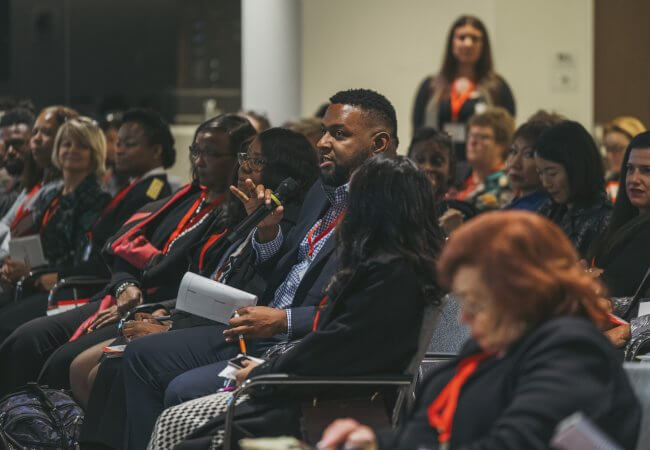
Dec 11, 2023
“Everyone Can Play a Role” in Advancing Health Equity

How can we make real progress on critical health care priorities like advancing health equity, diversifying the nursing workforce, mitigating the workforce crisis through the recruitment and retention of nurses, and elevating the concept of equity-minded nurses?
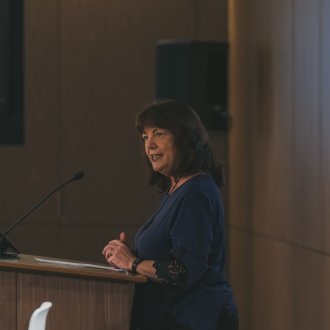
“One way is to bring nurses and their champions together to brainstorm solutions to these issues — because nurses are natural problem solvers,” says Susan Reinhard, senior vice president and director, AARP Public Policy Institute and chief strategist, Center to Champion Nursing in America and Family Caregiving Initiatives.
“Then, we can help them create specific action plans to make those solutions a reality.”
That was the thinking behind the AARP Health Equity and Nursing Summit: Turning Commitments into Action, held Oct. 31-Nov. 1 at AARP in Washington, D.C. Hosted by the AARP Center for Health Equity through NursingSM (A-CHEN) and the Future of Nursing: Campaign for Action, an initiative of AARP Foundation, AARP and the Robert Wood Johnson Foundation, the event brought together leaders from around the country to create health equity action plans for their workplaces, communities and networks. More than 150 summit participants were drawn from nursing, health care delivery, business, unions, social services, social justice and consumer organizations.
The conference opened with singer-songwriter Tad Worku, FNP-BC, an emergency department nurse who brings together song and health care to inspire and heal. Worku set the tone for the conference, speaking and singing about finding his purpose in nursing and serving others. He shared his story of leaving a promising career in music, working with musicians and producers who created hits for stars like Beyoncé and Kelly Clarkson, and on the brink of signing a major touring contract for his band, but feeling a lack of meaning his life. So he turned to nursing, and has since combined his two passions of serving others through nursing and singing, and never looked back.
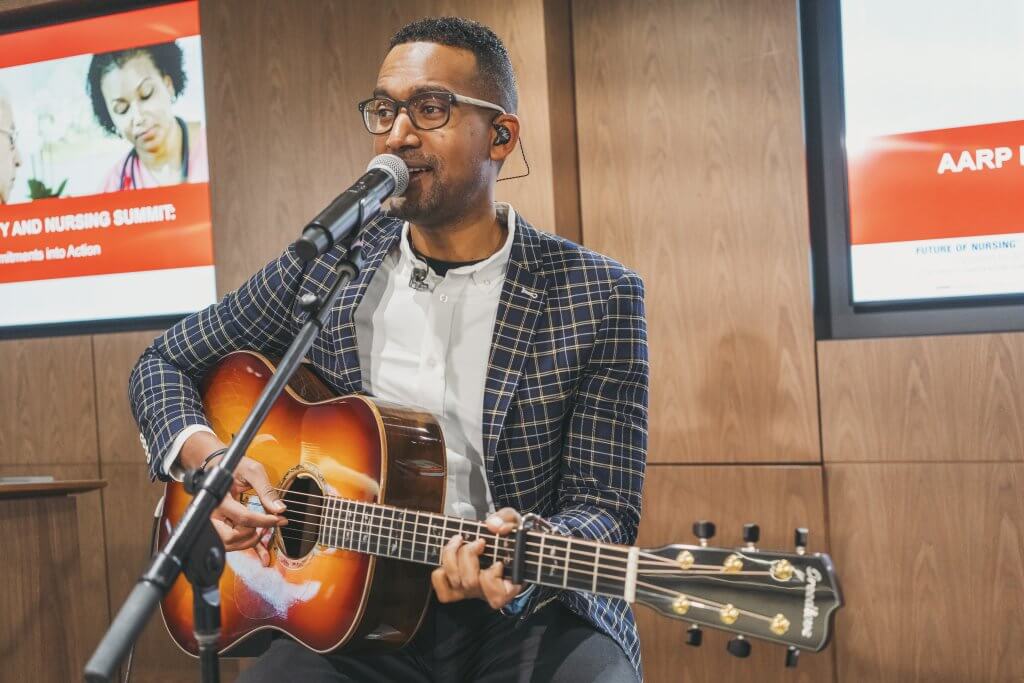
Then attendees rolled up their sleeves and began to hone their plans in interactive workshops that included Becoming an Equity-Minded Nurse, Progressing Seamlessly in Nursing as a Career to Achieve Financial Security, Effectively Addressing the Social Determinants of Health, and the Role Nurses Can Play in Informing the Public of Important Benefits and Services.
In these workshops, participants crafted specific health equity goals, along with metrics and timetables for achieving them. Goals include addressing structural racism to achieve workforce health equity, making health equity a strategic priority within participants’ organizations, developing a loan or debt-free program for rural and/or other underserved communities, increasing the number of American Indian nurses in particular states and creating a network of change agents that connects people, practice, and community partners to achieve health equity goals.
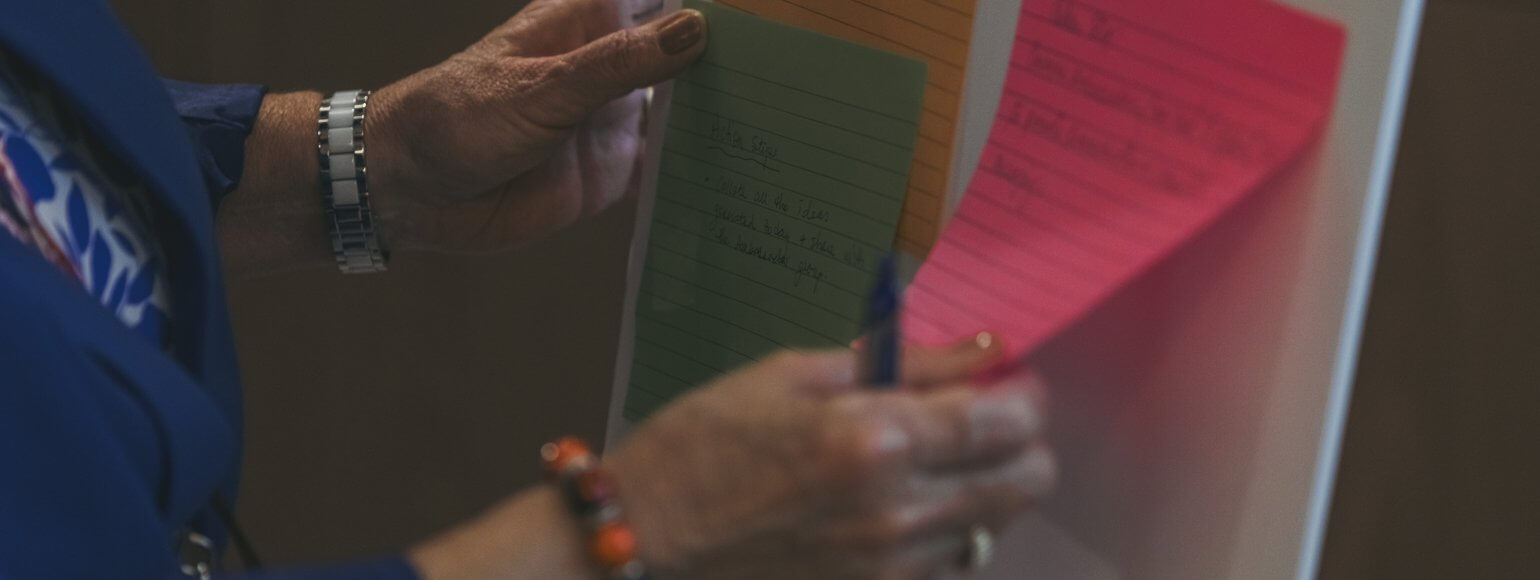
Because few goals can be accomplished alone, workshop members brainstormed potential allies and stakeholders who could help them achieve their objectives. For example, one workshop recommended engaging Historically Black Colleges and Universities’ schools of nursing in population-based approaches to achieve health equity and dismantle structural racism. Other participants decided that forging relationships with key leaders could bring along others who share their mission to advocate for health equity. And, since obstacles can arise in route to a person’s goals, workshop leaders helped participants anticipate educational, institutional and personal barriers that might prevent them from achieving their objectives and think of how to overcome them.
Participants also considered actions they could take to make their goals a reality. Examples included bringing their workshop discussions to their boards for further action, collaborating with their local college Diversity, Equity and Inclusion (DEI) organization, implementing cultural competence, diversity and inclusion training programs and workshops for nursing faculty, and deepening expertise in health care payment models to drive economic incentives for better health.
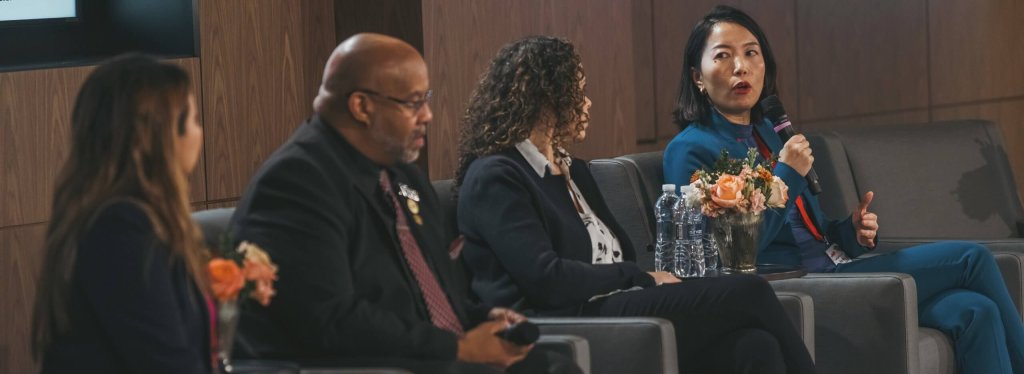
The larger environment in which summit participants must operate to achieve their health equity goals was considered as well. In another panel, Remaining Committed to Diversity, Equity and Inclusion, facilitated by Regina Cunningham, PhD, RN, FAAN, CEO, Hospital of the University of Pennsylvania, leaders from the nursing world, AARP and AARP Foundation examined how attendees could remain committed to diversity, equity and inclusion, given the current climate. They shared lessons they had gleaned from confronting racism in their own workplaces and personal lives.
Beverly Malone, PhD, RN, FAAN, president and CEO of the National League for Nursing, recounted how she dealt with racism overseeing a hospital maternal child unit. Her staff shared that a senior white physician on her unit was instructing the black staff not to touch his white patients. The staff said, “You told us you would make things different, so what do you plan to do about this?” Because the offending physician was very high-ranking, she thought carefully about how to approach him.
Malone finally decided on an indirect approach. In private, she said, “Doctor, there is an unbelievable rumor going around that you told your black staff not to touch your white patients. It is so devastating that that rumor is going around.” He responded, “Oh my goodness, no, I would never do that!” Malone said, “I didn’t think that you would.” Following their conversation, he never did so again.
Her takeaway?
“We have to find ways to share with people. Civility is very important, but it does not keep you from telling the truth. Whatever you need to do, do it. We must find ways to help others clean up their behavior.”
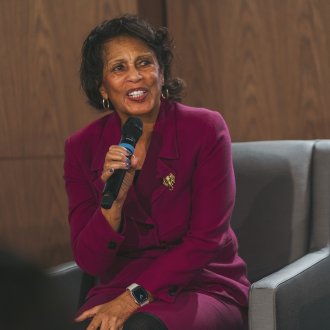
Ashley Darcy-Mahoney, PhD, NNP-BC, FAAN, a neonatal nurse practitioner and Robert Wood Johnson Foundation senior nurse scholar, shared a harrowing experience she had with a close friend who experienced health issues in her second trimester of pregnancy. Her friend, an African American woman, called Darcy-Mahoney complaining of dizziness and feeling unwell after her ob-gyn had instructed her to watch and wait in the face of these concerns. Alarmed, Darcy-Mahoney told her to go to urgent care to be assessed by a clinician. She also advised her friend to introduce herself and her husband with their professional titles (both formally referred to as doctor) to ensure that she was listened to and cared for with less bias. Her friend was treated for hypertension and delivered a healthy baby. Darcy-Mahoney explained
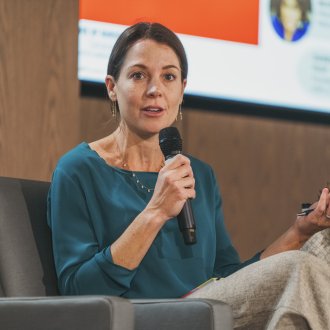
“All the things I had been taught about racism in health care manifested in this situation. I know the system and I wanted her to be safe in that system. For me, how we, in the maternal-child space, listen to people or don’t, have powerful implications on outcomes.”
As panelist Edna Kane Williams, MA, executive vice president and chief diversity officer at AARP observed about efforts to achieve health equity in the current climate, “This work isn’t for the faint of heart. Folks have lost the ability to be civil, persistent, and loud. And to persevere. It is not time to sit on the sidelines. Our way of life is being challenged every day. It is exhausting but so necessary. Whether you are a PhD, an RN, or a DNP – everybody can play a role – yet too many of us have decided to stay quiet.”
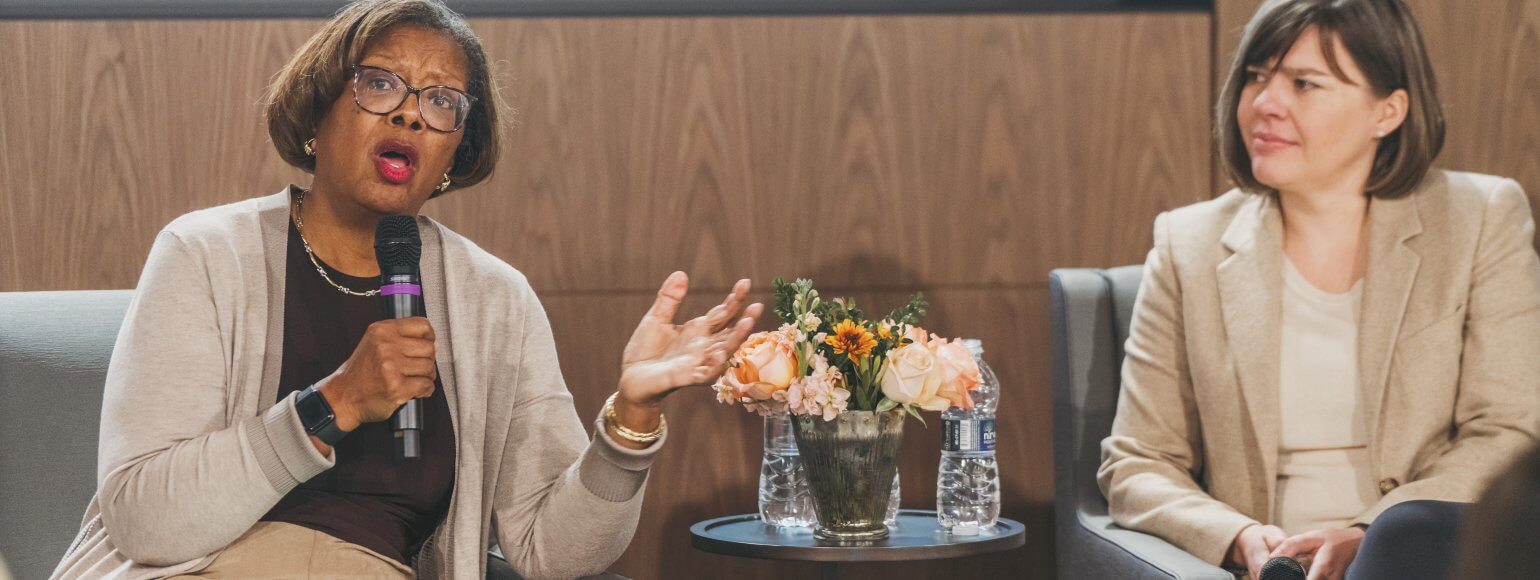
To make meaningful progress in advancing health equity, we must also consider those populations that have been most severely affected by racial inequity in health care. That’s why the summit hosted a panel entitled, “Health Equity Across Populations,” to lift up the voices of nursing leaders from LGBTQ+, Asian American Pacific Islander, and Black communities. These leaders highlighted health disparities experienced by the historically marginalized populations they represent and suggested steps we can take to improve health equity for them.
For Kelly Haviland, PhD, FNP-BC, TGNB-C, executive committee member of the Nursing Section of GLMA: Health Professionals Advancing LGBTQ+ Health Equality, the biggest priority is to ensure that we gather data pertaining to LGBTQ+ people for epidemiologic research. These data are needed so that we can understand the health status and care delivery experiences of LGBTQ+ people. Yet, the US Census doesn’t collect them, nor do many other national databases.
“We need to collect data in a consistent way in our electronic health records and do so in a safe, warm and welcoming way,” she said. “Educating nurses about LGBTQ+ health disparities is important, because, if you lack the data, you lack the proof to show that LGBTQ health disparities should be priorities.”

Jing Wang, PhD, RN, FAAN, President of the Asian American Pacific Islander Nurses Association, is committed to building diversity in the nursing profession through recruitment and mentorship. In her role as Florida State University College of Nursing Dean, she says,
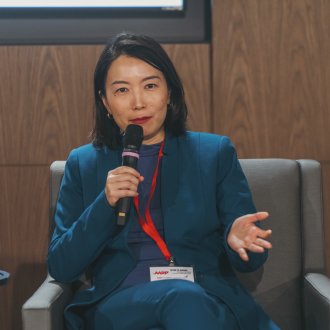
“I focus on recruiting leaders from diverse groups and making sure that, as a dean, they are successful in their academic careers. I’ve learned so much from these leaders in my own career and had many mentors teach me how to become a leader and a dean. I was very shy and introverted when I started out, so if I can do it, anyone can.”
Sheldon D. Fields, PhD, RN, FAAN, president of the National Black Nurses Association, is optimistic about the prospects that we can dismantle racism in nursing. He says, “As a profession, nursing has a moral and societal obligation to ensure that we are training a workforce that mirrors the society that we are and are becoming. I look at nursing and ask, how did we get here for so long with the underrepresentation of people of color within this profession? Where did all the gatekeeping to this profession start and how do we dismantle it?”
“For the rest of my career I will do everything I can to diversify the nursing profession. Nursing has a moral and ethical obligation to address this lack of diversity, and we are simply not there yet. But we have finally found the road and we are on it.”
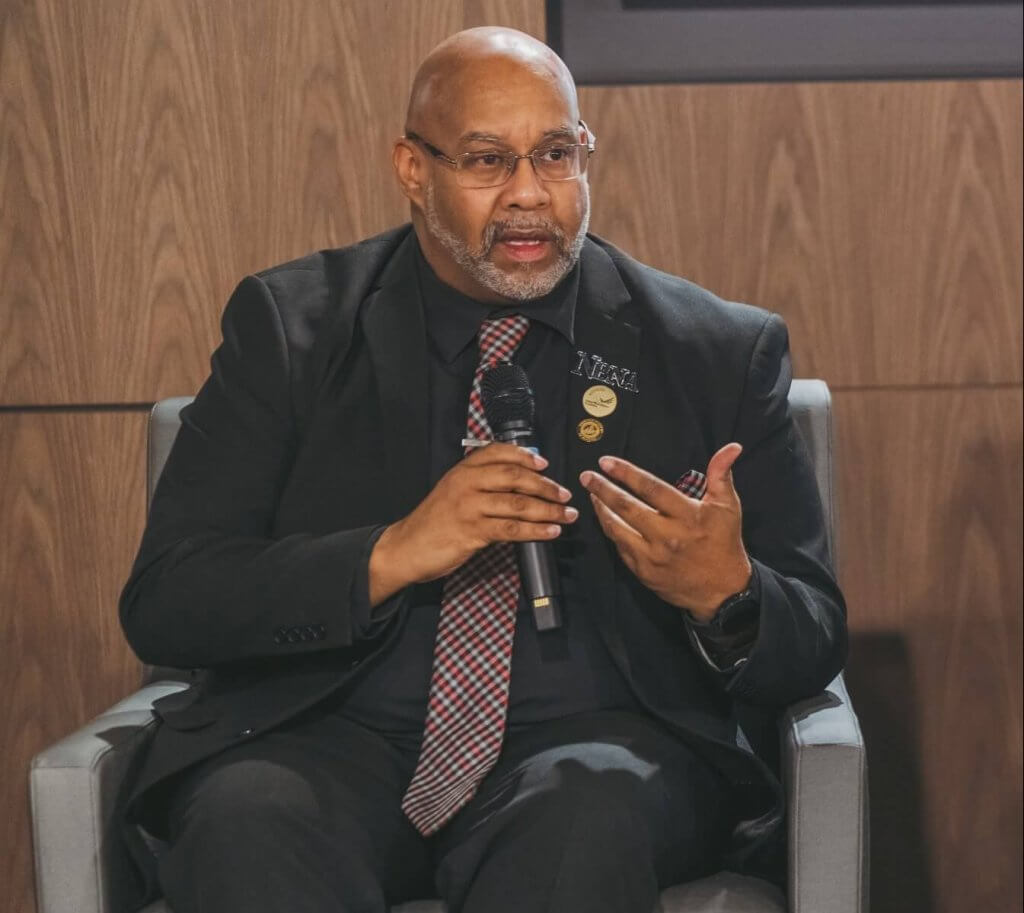
Adrianna Nava, PhD, MPA, RN, president of the National Association of Hispanic Nurses, envisions her organization becoming a national leader in Latino health — one that policymakers can look to for advice on Latino health issues. She is building a larger footprint in Washington and at the state and local levels. “Nurses need larger networks and leadership skill sets to be able to bring about policy change. Our organization is helping student and practicing nurses build both of those so we can impact our profession and the communities we serve,” she said.
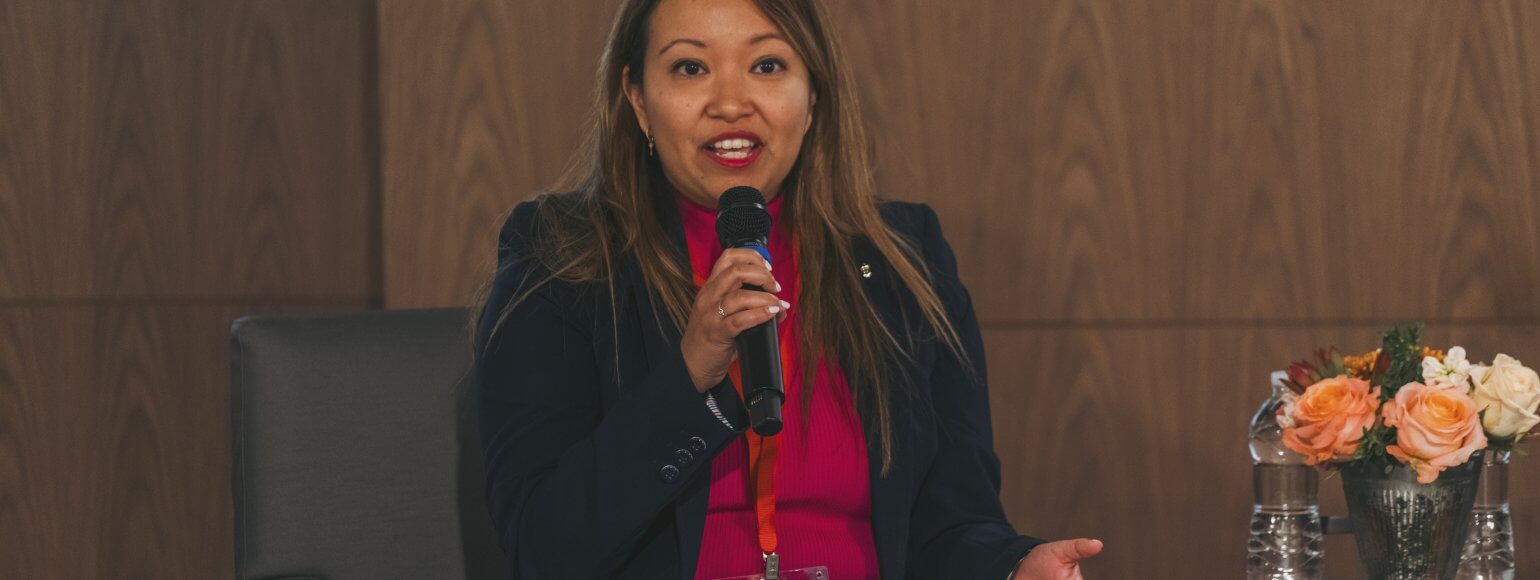
The summit panelists are hopeful about the changes that nurses are leading to create greater health equity throughout our society. Yet, as Staci Alexander, MPA, vice president, AARP Global Thought Leadership, notes,

“Health equity remains elusive in this country more than two decades after the seminal study by the National Academy of Medicine, Unequal Treatment, was conducted. While we remain more committed than ever to achieving this goal, we need your help.”
Learn more about getting involved with the Campaign for Action.
Photo credits: Greg Kahn for AARP.
